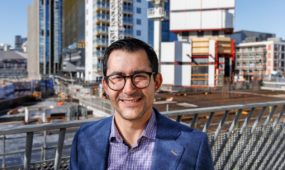Wrist plate to help fractures heal faster
Health & Medical
A PLATE designed to help wrist fractures heal faster will be launched next month.

Sign up to receive notifications about new stories in this category.
Thank you for subscribing to story notifications.
VRPVolar
It is the result of a joint project between the University of Adelaide’s Institute for Photonics and Advanced Sensing (IPAS) and Austofix, a South Australian medical device company specializing in orthapaedic trauma devices.
The design includes an improved locking mechanism for the plate and an increased variable angle for the screws, which means surgeons can get a better hold on the wrist bone, leading to quicker healing.
The VRP 2.0 is expected to be suitable for treating 90 per cent of all wrist fractures and will be released in Australia in June.
Austofix General Manager Chris Henry said the compact, universal wrist plate used patented locking technology to enable the screws to create an angulation of 40 degrees as opposed to the standard 30 degrees.
“Our Austofix product design engineers, working with IPAS, were able to innovate within a flexible design and manufacturing process. This environment was key to our ability to take the prototype to market within such a short timeframe,” he said.
“There are key components of the plate manufactured using 3D printing, this enabled us to create a complex design without the costs associated with traditional manufacturing. It also enabled us to bring the device to market quickly.”
Austofix has a number of products including a range of stainless steel and titanium surgical nails, which it exports to the Middle East and China.
Director of IPAS, and Chair of Experimental Physics with the School of Physical Sciences Professor Andre Luiten said IPAS was set to become the advanced manufacturing research and development lab for Austofix as a result of the VRP 2.0 project.
“This is one of the exciting outcomes of the Photonics Catalyst Program which brings together university expertise in laser and other light-based technologies (photonics) with industry to support the development of cutting-edge products,” he said.
South Australia is emerging as a hub for the medical devices industry. This week the state’s capital Adelaide hosted the 9th annual AusMedtech conference for the first time.
The city is also home to the new Adelaide BioMed City precinct, a $3 billion tripartite health hub comprising a soon-to-be-completed major hospital, research centres and educational institutions.
Jump to next article



